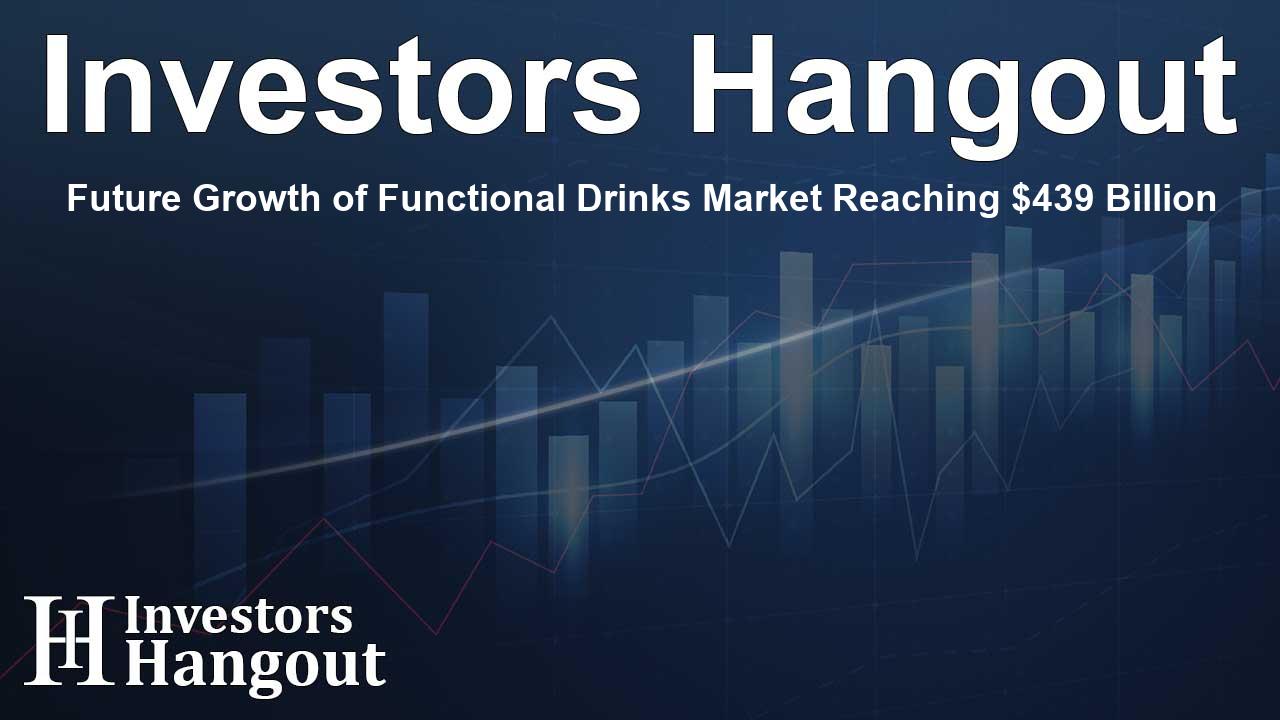Future Growth of Functional Drinks Market Reaching $439 Billion

Exploring the Expansion of the Functional Drinks Market
The functional drinks market is positioned for significant growth, anticipated to evolve from a valuation of USD 233.98 billion in the recent past to an impressive USD 439.21 billion by 2034. This remarkable expansion, at a CAGR of 6.5% from 2025 to 2034, is propelled by increasing health and wellness trends influencing consumer choices.
The Shift in Consumer Preferences
As health consciousness rises, individuals increasingly seek beverages that not only hydrate but also offer functional benefits—ranging from immunity support to energizing properties. Key players in the market are responding to this shift by enhancing their product lines with nutraceutical offerings and probiotics, readily available in supermarkets and hypermarkets.
Key Market Drivers
The growing awareness about health and fitness among the global population is turning trends in favor of functional drinks. For instance, energy-dense beverages, which predominantly lead the sector, find themselves at the forefront, thanks to their extensive availability through both traditional retail and online platforms.
Emerging Distribution Channels
While supermarkets and hypermarkets dominate the market, online retail channels are sprouting swiftly due to their convenience and reach. The acceptance of e-commerce in beverage sales not only enhances convenience for consumers but also provides opportunities for brands to reach a broader audience.
Market Segmentation and Insights
A closer look at segmentation reveals interesting insights: the energy drinks segment demonstrates a significant market share of approximately 41%, while sports drinks are projected to witness the most substantial growth, boasting a projected CAGR of 7.3% throughout the forecast period.
Trends Shaping the Industry
Manufacturers are embracing innovative trends to cater to evolving consumer preferences. Notable trends include:
- Natural Ingredients: There is a surge in demand for beverages containing organic and non-GMO components, steering clear of artificial additives.
- Low Sugar and Sugar-Free Options: Health-savvy consumers increasingly favor low-sugar formulations or beverages sweetened with alternative options.
- Customized Nutritional Solutions: Drinks are increasingly tailored to enhance immunity, cognitive performance, and gut health.
- Mental Wellness Ingredients: The inclusion of adaptogens and nootropics caters to those seeking stress relief and enhanced focus.
- Plant-Based Alternatives: The market sees a rise in the popularity of drinks based on coconut, oat, and almond proteins.
The Role of Artificial Intelligence in Market Evolution
Artificial Intelligence (AI) is reshaping the functional drinks landscape. Key applications of AI include optimizing formulation processes and enhancing consumer interaction through personalized recommendations. By analyzing extensive data regarding consumer health trends and preferences, AI aids manufacturers in developing tailored products that meet market demand.
Recent Market Developments
Recent innovations have sparked consumer interest, such as notable endorsements from high-profile athletes. For example, the launch of Mas+, a new sports and energy drink by an acclaimed athlete, showcases emerging trends toward healthier beverage alternatives free from artificial ingredients.
Challenges and Opportunities Moving Forward
Despite robust growth, the market faces hurdles, including regulatory challenges pertaining to ingredient safety and health claims. Businesses must adhere to rigorous local regulations; non-compliance can lead to severe repercussions, including fines or product recalls. However, the increasing focus on health and wellness presents significant opportunities for brands to introduce innovative and health-promoting beverage options.
Regional Insights
Geographically, the Asia Pacific region is leading the market, largely due to favorable demographics, urbanization, and rising health awareness. On the other hand, North America is projected for notable growth, fueled by greater consumer interest in naturally derived products and the launch of innovative functional drinks.
Frequently Asked Questions
What is the projected growth of the functional drinks market?
The functional drinks market is projected to grow from USD 249.19 billion in 2025 to USD 439.21 billion by 2034.
Which segment leads the functional drinks market?
The energy drinks segment currently holds the largest share, constituting around 41% of the market.
What trends are driving growth in the functional drinks sector?
Key trends include increased demand for natural ingredients, low-sugar alternatives, and personalized nutritional beverages.
How is AI influencing the functional drinks market?
AI is enabling product personalization, enhancing supply chain efficiency, and streamlining consumer interaction through advanced analytics.
Which region is expected to see the fastest growth in this market?
North America is anticipated to experience significant growth due to rising health consciousness and product innovation among consumers.
About The Author
Contact Hannah Lewis privately here. Or send an email with ATTN: Hannah Lewis as the subject to contact@investorshangout.com.
About Investors Hangout
Investors Hangout is a leading online stock forum for financial discussion and learning, offering a wide range of free tools and resources. It draws in traders of all levels, who exchange market knowledge, investigate trading tactics, and keep an eye on industry developments in real time. Featuring financial articles, stock message boards, quotes, charts, company profiles, and live news updates. Through cooperative learning and a wealth of informational resources, it helps users from novices creating their first portfolios to experts honing their techniques. Join Investors Hangout today: https://investorshangout.com/
The content of this article is based on factual, publicly available information and does not represent legal, financial, or investment advice. Investors Hangout does not offer financial advice, and the author is not a licensed financial advisor. Consult a qualified advisor before making any financial or investment decisions based on this article. This article should not be considered advice to purchase, sell, or hold any securities or other investments. If any of the material provided here is inaccurate, please contact us for corrections.
